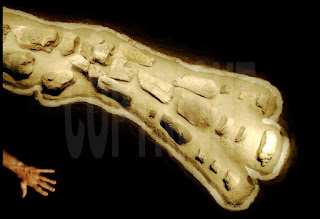October 25, 2012
October 23, 2012
Musharraf spent PKR 88m from Bait-ul Maal on Bugti’s opponents
Former president of Pakistan General (Retd) Pervez Musharraf’s government spent more than Rs 88 million on the Kalpar tribe (opponents of Nawab Akbar Bugti) from Bait-ul Maal during 2003-2006 to settle them in Punjab.
This information was given to the Public Accounts Committee Tuesday during the audit of the Pakistan Bait-ul Maal. Ms Yasmeen Rehman chaired the panel’s meeting in the absence of chairman PAC Nadeem Afzal Gondal.
Mir Ahmadan Bugti, the head of anti-Bugti tribe was also given Rs 300 for three years. According to the details given to the PAC, Rs 5.611 million were spent for the purpose in 2003-04, Rs 20.917 million in 2004-05 and Rs 23.180 in 2005-06 million from the Bait-ul Maal funds.
On this Khawaja Asif remarked that to kill the genuine Bugti, fake Bugtis were funded. Ms Yasmeen Rehman said it was tragic that Bait-ul Maal funds to kill Nawab Akbar Bugti.The PAC on Tuesday also took up audit of the accounts of Presidency and the Prime Minister’s Secretariat for the year 2004-05.
The PAC was informed that during 2004-05 Rs 8.7 million were spent on the repair of Mercedes Benz car of a former prime minister. The cost of a new Mercedes car was Rs 50 million and so instead of purchasing a new car, Rs 8.7 million were spent on the repair of the damaged car for which spare parts were imported from Germany.
October 22, 2012
October 20, 2012
October 12, 2012
October 11, 2012
Baluchitherium of Balochistan
Paraceratherium, also commonly known as Indricotherium or Baluchitherium. is an extinct genus of gigantic hornless rhinoceros-like mammals of the family Hyracodontidae, endemic to Eurasia and Asia during the Oligocene epoch. It was first discovered in the Balochistan, hence the name, by Sir Clive Forster Cooper during 1911.
Piecing Together. Nearly 200 fossilized bones from different animals were used by scientists to rebuild a 2-D skeleton of Baluchitherium. A meter-long rod was placed between its limbs to give a scale. Background: the Zin massif (see caption of photo 4). Right: Jean Loup Welcomme, paleontologist at the University of Montpellier and director of the Mission Paléontologique Française au Balochistan
3d computer made picture of Baluchitherium
A Great Catch. Jean Loup Welcomme shows Baluchitherium bone fragments to the Bugti guards.
Almighty leader of the realm Bugti, the nawab Bugti invites the representatives of the big families of the realm for one palavers to prove and explain foreigners' presence, in this case the team of Jean Loup Welcomme, on their territory. From moment or Nawab gave its protection, all the bugtis owes protect the scientists.
For the occasion, Jean Loup Welcomme turned into a teacher. He said the village children the reasons for his presence here and how their country, now desert, sheltered there thirty million years a lush forest and large animals such as Baluchitherium. The blackboard, Jean Loup Welcomme draws the animal.
Gregoire Métais and Jean Loup Welcomme at Dera Bugti
Jean Loup Welcomme, a paleontologist at the University of Montpellier and director of the Paleontological French Mission in Balochistan
Laurent Marivaux, Gregory Métais
Museum of Natural History in Toulouse, France; the Scientific Rendering. Paleontology laboratory. Dr. Pierre Olivier Antoine is a young French expert on Baluchitherium and has written a thesis on rhinoceros family fossils (to which Baluchitherium belongs). Thanks to the fossils and the photos made during the excavation, Pierre Olivier Antoine was able to draw scientific rendering of the Baluchitherium skeleton, first limb by limb, then in its entirety.
Piecing Together. Close up of a front limb, which morphologically corresponds to a human hand
The expedition moves from the Lundo site to the site of Hargaî, where the skeleton of the Baluchitherium will be reconstructed. In the background, the lunar landscape of the Zin massif
Village and school of Sart-aaf. Using their youthful imagination, the Bugti schoolchildren drew Baluchitherium.
A great catch. 30 million years ago, this dry valley held a wide river surrounded by lush forest. One day, a group of juvenile and adult Baluchitherium were snatched by crocodiles. Their skeletons, covered in silt and sediment deposited by the river and therefore protected from air and light, slowly mineralized and became fossils. 30 million years later, wind erosion exposed bits of the fossils, and Jean Loup Welcomme’s research team begins to gather the remarkably old and concentrated group of fossils. 10 kilometers from the southern border of Bugti territory, the team is closely guarded by the warriors of Nawab (the King of the Bugti), watching over them as they work in an area close to enemy territory occupied by the Kaplar tribe.
The Journey. Jean-Loup Welcomme leads the scientific team made up of 4 French and one Thai scientist and 10 armed Bugti men. Here the team approaches the Zin in the Bugti desert (background: see photo 48) to begin the excavation at Lundo and Paali sites, recognized a year earlier as being exceptionally rich in fossils. The team travels by dromedary, the only means of transport adapted to the combination of heavy loads, uneven terrain and a dry climate.
The Dating Process. Using a portable magnifying glass, Jean-Jacques Jaeger, Professor at the University of Montpellier (France) and Jean Loup Welcomme sift through sediment. This task calls for intense concentration and can be repeated up to 10 times in a day. It can be very difficult to distinguish a tiny tooth from a grain of sand.
Almighty leader of the realm Bugti, the nawab Bugti invites the representatives of the big families of the realm for one palavers to prove and explain foreigners' presence, in this case the team of Jean Loup Welcomme, on their territory. From moment or Nawab gave its protection, all the bugtis owes protect the scientists.
Nawab Akbar Bugti (The great King of Balochistan)
Among thousands of micro-fossils collected on Paali's site, the scientists found some tiny teeth of lemurs dated thirty million years. Of this discovery, Laurent Marivaux (here in the microscope andor in the foreground) drafted a scientific publication in the American review Science (in October, 2001). Indeed, these some teeth question simply the African origin of the primates and by consequent the African origin of the man.
Refrigerators at the Quai de la Gare, Paris, 13th district, France: the Sculpture. Using the scientific drawings made by Pierre Olivier Antoine, sculptor Jean Paul Reti renders Baluchitherium out of clay (Jean Paul Reti made a sculpture of Australopithecus Abel in 1997).
Piecing Together. Cases carrying the precious fossils were transported there on camel-back. Jean Loup Welcomme, Laurent Marivaux and Grégoire Métais unwrap the most recognizable bones first. For the next three days, under the gaze of the incredulous Bugti warriors, the team attempts to piece together the gigantic puzzle made up of bones 30 million-years old. Due to erosion and fragmentation, the bones have lost many of their identifying qualities. The assembly of the skeleton requires a complete and precise knowledge of anatomy. To better understand the morphology of Baluchitherium, the scientists traced a white plaster outline around the skeleton. A 5-meter high tower of bamboo is erected to help visualize its size. Finally, a meter-long bamboo rod (painted white), placed along the skeleton acts as a scale.
the Ex Machina company, Clichy, France. 3-D Virtual Rendering. With help from Jean Loup Welcomme and Pierre Olivier Antoine, and a miniature reproduction made by Jean Paul Reti, programmers create a virtual image of Baluchitherium moving about in its environment. Thanks to the micro-fossils found at the Paali site (photos 12-14), scientists are able to describe the flora and fauna surrounding Baluchitherium 30 million years ago.
October 08, 2012
October 06, 2012
October 04, 2012
October 03, 2012
Subscribe to:
Posts
(
Atom
)













+Bugti,+who+favored+the+searches(excavations)+of+the+team+of+Jean+Loup+Welcomme+for+5+years,+came+on+the+site+of+Harga%C3%AE's+reconstruction+with+his+nurse+moved.jpg)






























.jpg)

